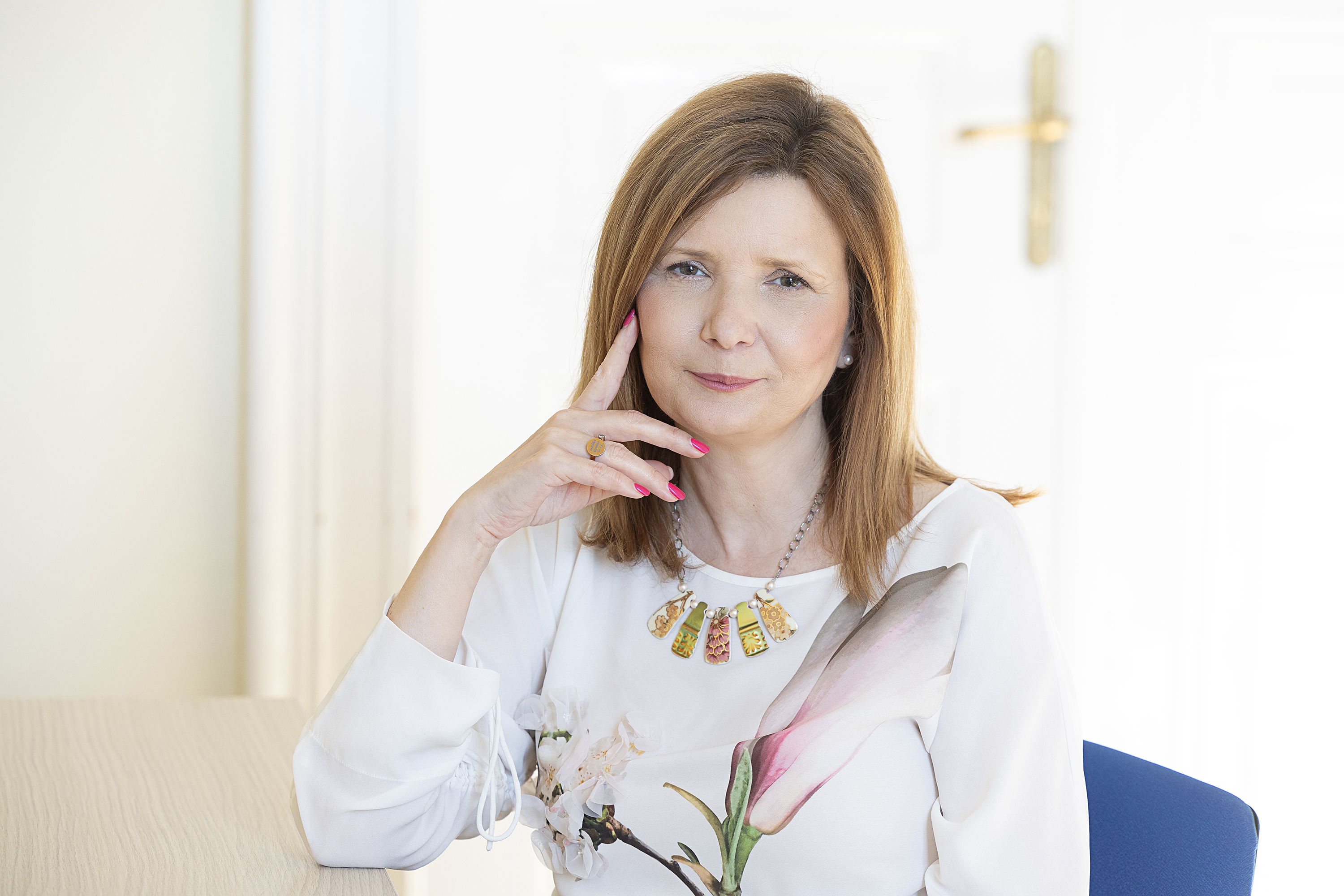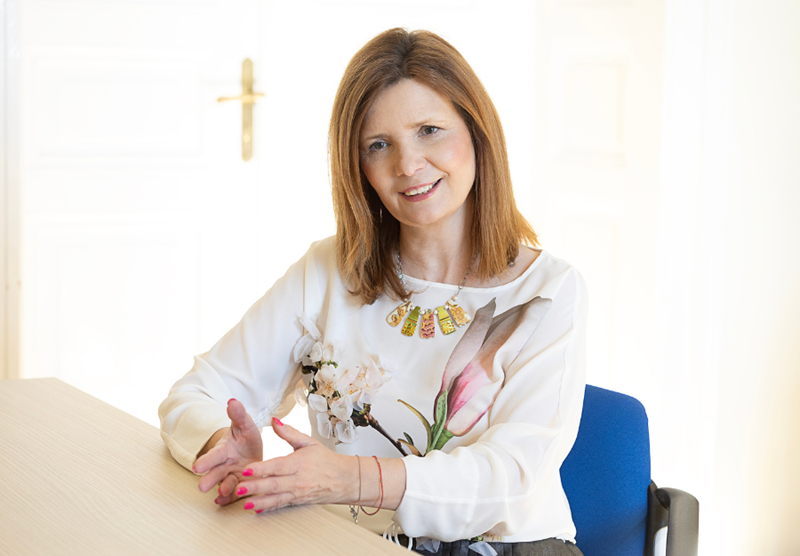More Collaboration and Less Silos – Interview with Dr. Klára Tatár-Kiss

In February, you joined the university as Chief Culture and People Officer, bringing extensive experience from the corporate world. What made you decide to continue your career in academia?
My interest in academia is not new—it actually started 16–18 years ago. Even while building my career in the business world, I began looking for ways to connect with academia. At first, I was a guest lecturer, then I started teaching more regularly. This journey eventually led me to earn a PhD in sociology. While working on my PhD, I realized what had been missing for me in the corporate sector. We were handling many tasks at a high level, but perhaps due to time constraints or other factors, I missed the kind of critical thinking that is deeply embedded in academia. In the corporate world, we focus on execution, but in academia, we take the time to explore concepts in depth, whether in theory or application. I pursued my PhD with the intention of bridging science, business, and practice. So, when the opportunity arose to work in HR within a university setting, my eyes lit up—even though I had not been considering a career change. It felt like a once-in-a-lifetime opportunity, and I knew I had to take it.
What are your experiences at Corvinus so far? How do you see the university as an employer and as a workplace?
It’s an interesting question because when I first arrived, I honestly didn’t know what to expect—what HR is like at a university, how different it would be from the corporate sector. But I quickly realized that I feel very much at home here. I believe Corvinus is a leader among universities in the way it approaches HR. It handles this area in line with today’s key trends, which is very forward-thinking. It also became clear to me quite quickly—and I consider this a major positive—that Corvinus is truly an international environment. We have a Belgian rector, many international students and faculty, and strengthening this global presence is a clear strategic goal. Of course, stepping into this role meant stepping out of my comfort zone, but I feel great. My colleagues—whether in my own team, in other departments, or on the Executive Committee (EXCO)—have welcomed me with openness, which has been a fantastic experience.

A major reorganization is taking place at the university. What are the HR implications of this process?
When working with people, you quickly realize that almost everything has an HR aspect. The fine-tuning of the university’s strategy brings many tasks for HR. One key priority is internationalization and multiculturalism, which I believe is very much an HR issue as well. It’s not just about recruiting international researchers and faculty but also integrating them into the organizational culture. Although not directly part of the strategy refinement, I must mention that organizational culture development is also underway at the university, with a strong emphasis on leadership competencies. The university’s leadership has committed to servant leadership – a people-centered leadership style –, which I believe is absolutely the right direction. However, the challenge lies in when this approach will become a core skill for leaders and how we can integrate it into HR processes. This will be an exciting task for us. In the reorganization process, there is a strong focus on improving the quality of teaching and research, which is a key pillar of the new strategy. Naturally, this will also be reflected in various HR systems. One more topic I want to highlight—something the university has already made efforts on—is workplace well-being. As a leader, this has always been a fundamental issue for me because an organization is made up of individuals, and their well-being directly impacts their performance. I want to further develop this area by reviewing existing initiatives and assessing what additional needs may arise.
The university is in the process of defining its mission, vision, and values. What are the next steps in this process?
The mission and vision are strongly linked, and both are already close to their final versions. When it comes to the university’s values, we also have a first draft—a working version that everyone can build on. Our goal is to identify three to four core values that everyone at the university finds relevant and can truly identify with. These will form the final set of values. At this stage, as part of the servant leadership concept, we are training facilitators. Through this training, leaders receive the necessary tools to bring the topic of values into discussions with their teams. This step is crucial because, for this process to be successful, we need to ensure a shared understanding of what each value means. We are leaving it entirely up to leaders to decide how much time and effort they invest in this discussion. In the spirit of leadership empowerment, they can determine to what extent their teams should be involved and how much interest there is in shaping these values. Naturally, we will collect feedback throughout the process. At the same time, we will engage in discussions about the values within the Executive Committee as well. In the end, we will combine all the feedback to establish the final set of values that will guide how we live and work at the university. I see this as a challenging yet incredibly rewarding HR task.

The leadership culture shift and the introduction of the servant leadership approach have already been mentioned. Where does this process currently stand?
The servant leadership model has been around for a long time, but it has recently gained popularity because it introduces values like empathy and people-centered leadership, which were not always considered essential traits of a good leader. I believe that the COVID era brought a significant shift in this regard—when interactions moved online, employees started to see their managers as more relatable. They realized their bosses wore hoodies just like them, had kids interrupt meetings, and were, in many ways, just regular people. This broke down the myth of the “untouchable” leader and blurred the lines between managers and employees. As a result, employees began to expect more empathy and care from their leaders, which aligns perfectly with the servant leadership model. In this approach, leaders don’t just rely on authority but work to engage their teams, create buy-in, and ensure that employees feel ownership over their work. However, cultural and leadership transformation is always a long-term process. This program is expected to continue not just this year, but into the next as well.
When it comes to HR, one of the most central issues for employees is always compensation and salary development. What can be expected in this regard in the future?
In the academic field, the Academic Career Model (ACM) and the related measures help ensure that compensation increases along with performance. The salary increase this year has already followed this principle, and the next two are planned to do the same. In the service sector, we align with the Hays levels. Hays is one of the largest compensation consulting firms on the market, and the university purchases their survey every year, granting us access to competitive market data. Accordingly, in the service sector, market dynamics also apply to compensation.
What other measures do you see as possible to make the university more attractive to employees?
More collaboration and less silos. I think it’s a great opportunity if departments that traditionally don’t have much interaction can work together on certain tasks. This can have a positive impact on the quality and results of the work, but I think even more importantly, it has a community-building role. This approach is beneficial because it allows fresh perspectives and new opinions to come in, which might not arise from the usual experts in a particular field due to routine, familiarity, or other reasons. And there is one more thing I would like to strengthen: the sense of pride in being a part of the Corvinus community, being part of this organization and team.
The previous interviews: